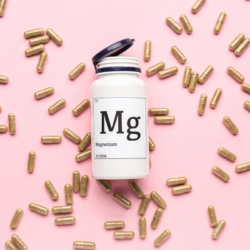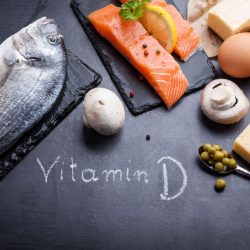In the world of health and well-being, rapid and effective recovery after surgery, injections or bruising is vital to ensure patients enjoy a good quality of life. PiLeJe Laboratories, renowned for their expertise in micronutrition since the 1990s, have developed Proteochoc, an innovative food supplement. Proteochoc has been designed to support the body at these delicate times.
Drawing on their in-depth knowledge of phytotherapy, osteopathy, mesotherapy and nutrition, PiLeJe researchers have developed a product that combines natural, effective ingredients. Proteochoc is distinguished by its unique composition, including Porphyral HSP® from Porphyra umbilicalis seaweed and borage oil, known for its soothing properties on stress and anxiety. This dietary supplement is a natural response that complements traditional medical treatments, offering crucial support to the body as it recovers from physical or emotional trauma.
In this article, we’ll explore the features of Proteochoc in detail. We will also discuss its role in post-traumatic recovery and the multiple benefits it brings to individuals going through periods of convalescence or intense stress.
What is Proteochoc by Pileje used for?
Proteochoc is a dietary supplement developed by PiLeJe Laboratories, a well-known company in the field of micronutrition. This product is specifically designed to offer support to the body following physical or emotional shocks. Examples include surgery, bruising or periods of intense stress. Proteochoc’s main aim is to speed up and facilitate the recovery process. In this way, it helps the body to repair and recover more quickly and effectively.
What is Proteochoc made of?
The composition of Proteochoc is the result of in-depth research and specialist knowledge in phytotherapy, osteopathy, mesotherapy and nutrition. The two main active ingredients in Proteochoc are :
- Porphyral HSP®: Porphyral HSP®, extracted from the seaweed Porphyra umbilicalis, is a key component of the Proteochoc dietary supplement. Research indicates that heat shock proteins (HSPs) play a vital role in the response to oxidative stress and ischaemia/reperfusion injury. HSPs help maintain cellular homeostasis and protect cells from damage. These proteins activate important transcriptional factors such as HSF1 and Nrf2, which are involved in cell survival pathways and antioxidant systems. HSPs also interact with antioxidant systems and may have a complementary function. This ability to respond to cellular stress and promote cellular repair makes Porphyral HSP® particularly effective in supporting physical and emotional recovery after trauma.
- Borage oil: Extracted from the seeds of the borage plant, this oil is rich in essential fatty acids, particularly gamma-linolenic acid (GLA). It is recognised for its ability to promote emotional balance and reduce anxiety. Traditionally used for its beneficial effects on the skin and stress, borage oil in Proteochoc contributes to a holistic approach to recovery, acting on both a physical and psychological level.
In addition to its main ingredients, Proteochoc contains other nutrients and plant extracts. These elements are selected for their effectiveness and synergy in the healing process. In this way, Proteochoc becomes an ideal dietary supplement to support the body in its recovery phases after traumatic events.
What are the recognised benefits of Porphyra umbilicalis seaweed?
Porphyra umbilicalis seaweed, also known as Nori seaweed, has a variety of health benefits, which are supported by various scientific studies.
1. Immunomodulating and antioxidant activities
One of the remarkable properties of Porphyra umbilicalis is its immunomodulating and antioxidant activity. Sulphated polysaccharides, the key components of this alga, play an important role in modulating the immune system and have significant antioxidant capacities. These characteristics are crucial in protecting and repairing cells against oxidative damage and inflammation, which is particularly beneficial in the context of post-traumatic or surgical recovery.
2. Nutritional and therapeutic potential
Porphyra umbilicalis is also rich in peptides and phycoerythrin, compounds with a variety of nutritional and therapeutic benefits. These components can contribute to overall health, in particular by offering support during physical recovery and improving general well-being.
3. Pharmacological properties
This algae is also recognised for its potential pharmacological applications. The bioactive compounds it contains could play a role in the prevention and treatment of various health conditions, thanks to their anti-inflammatory and restorative properties.
In conclusion, the benefits of Porphyra umbilicalis are multiple and cover a wide range of activities, from improving immunity to antioxidant and therapeutic effects. This wealth of bioactive compounds makes the seaweed a key ingredient in food supplements such as Proteochoc, where it helps to recover and support the body after physical or emotional shocks.
What are heat shock proteins used for?
Heat shock proteins (HSP) protect and repair cells in the face of stress. They preserve the integrity of cellular proteins. This is particularly important in the event of stress such as heat, oxidation or tissue damage. HSPs act as molecular chaperones, helping proteins to fold correctly, transport and degrade. They are also involved in defence mechanisms against oxidative damage and play a role in the immune response. In addition, HSPs can have anti-apoptotic functions, protecting cells against programmed death in the event of severe stress. These properties make HSPs crucial for cell survival and recovery after trauma or stress.
Heat shock proteins (HSPs), also known as stress proteins, are essential players in maintaining cellular integrity in the face of various environmental stresses. They act as molecular chaperones, facilitating the correct folding of proteins and preventing their undesirable aggregation. In this article, we explore in detail the crucial role of HSPs, their structure, their biological functions, their implications in disease and their therapeutic applications.
Structure and function of heat shock proteins
HSPs can be classified into different families according to their molecular weight, for example HSP70, HSP90, and the small HSPs. Their main role is to act as molecular chaperones. They help newly synthesised proteins to fold correctly and facilitate the degradation of damaged proteins. They are also involved in the intracellular transport of proteins and the regulation of their biological activity.
Response to cellular stress
The production of HSPs is strongly induced in response to various cellular stresses. These include heat, toxins, radiation and changes in pH. This response is orchestrated by specific transcription factors, such as HSF1, which bind to the promoters of HSP genes to stimulate their expression. This induction of HSPs helps cells to survive and recover from potential damage.
Biological functions of heat shock proteins
HSPs play a crucial role in maintaining the quality of proteins by promoting their correct folding and preventing their aggregation. They are also involved in the degradation of damaged proteins by the proteasome. In addition, HSPs can protect cells against oxidative stress by stabilising proteins sensitive to oxidation.
Heat shock proteins in diseases
HSPs are implicated in many diseases, including neurodegenerative diseases such as Alzheimer’s and Parkinson’s disease. Their ability to protect proteins against stress and promote their correct folding is essential. This helps to maintain normal cell function. HSPs also play a role in the development and progression of cancer. They promote the survival of tumour cells under conditions of stress.
When should heat shock proteins be used?
The therapeutic applications of heat shock proteins are promising in the treatment of various diseases. HSPs protect cells against stress and regulate protein quality. As a result, they have become targets of interest for the development of new therapies.
In neurodegenerative diseases such as Alzheimer’s and Parkinson’s, where protein misfolding and aggregation are key features, modulation of HSPs could offer therapeutic advantages. Strategies aimed at increasing the expression of HSPs or enhancing their chaperone activity could help to reduce the accumulation of pathological proteins and prevent neurodegeneration.
Similarly, in the context of cancer, HSPs play a crucial role in the survival of tumour cells under stressful conditions, such as hypoxia or anti-cancer therapy. Inhibitors of HSP90, in particular, are being studied as potential anti-cancer agents because of their ability to disrupt the stability of oncogenic proteins and induce cell death in cancer cells.
Exploiting HSPs for therapeutic purposes could benefit other conditions, such as cardiovascular, inflammatory and metabolic diseases. In-depth research is focusing on understanding the underlying mechanisms. The aim is to develop pharmacological interventions that target HSPs selectively and effectively.
How should Proteochoc be taken?
A course of Pileje Proteochoc is particularly recommended for post-operative recovery. Surgery puts a great deal of stress on the body, both physically and psychologically. Proteochoc provides essential support for the body. It helps the body to overcome the challenges of convalescence and reduce the stress associated with the operation.
How long should Proteochoc be taken?
Proteochoc is available in capsule form, with box options of 12 or 36 units. The length of the course may vary according to individual needs and the nature of the trauma suffered. A box of 12 capsules is generally suitable for a short course of treatment, lasting from 3 to 12 days. For a longer course of treatment, the 36-capsule box can be used, allowing up to 36 days of treatment.
What is the dosage for this post-operative treatment?
The dosage of Proteochoc varies from 1 to 4 capsules per day. However, the dosage may vary according to the recommendations of the healthcare professional and the specific needs of each individual. It is important to take these capsules with a large glass of water and to strictly adhere to the recommended daily dose.
What precautions should I take?
- We recommend using Proteochoc as part of a balanced diet and healthy lifestyle. In addition, you should keep the capsules in a cool, dry place, away from light. We also recommend that you consume them before the expiry date indicated on the packaging.
- It is also important to remember that Proteochoc is not a substitute for medical treatment and the necessary protective measures. For example, sun protection in the event of exposure to UV rays. In the event of major trauma, it is essential to consult a doctor for appropriate assessment and treatment.
Complementarity with medical treatments
Proteochoc, as a natural supplement, fits perfectly into an overall care plan, complementing appropriate medical measures. It represents a natural solution for coping with the stressful events and traumas of everyday life. It also supports the body in its recovery and healing process.
Source:
- Plant Foods Hum Nutr
. 2019 Mar;74(1):10-17. doi: 10.1007/s11130-018-0707-9.
Health Benefits and Pharmacological Effects of Porphyra Species - Mar Biotechnol (NY)
. 2019 Aug;21(4):577-587. doi: 10.1007/s10126-019-09905-x. Epub 2019 Jun 27.
Immunomodulatory and Antioxidant Activities of Sulfated Polysaccharides from Laminaria ochroleuca, Porphyra umbilicalis, and Gelidium corneum







